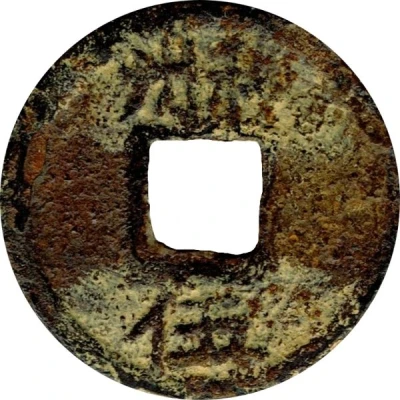


© Christopher Li (CC BY-NC-SA)
5 Cash - Jiading Yuanbao; Lizhou; iron ND
| Iron | 10.12 g | 33 mm |
| Issuer | Empire of China |
|---|---|
| Emperor | Southern Song dynasty › Ningzong (宋寧宗) (1194-1224) |
| Type | Standard circulation coin |
| Years | 1208-1224 |
| Value | 5 Cash |
| Currency | Cash (621-1912) |
| Composition | Iron |
| Weight | 10.12 g |
| Diameter | 33 mm |
| Thickness | 2.6 mm |
| Shape | Round with a square hole |
| Technique | Cast |
| Orientation | Medal alignment ↑↑ |
| Demonetized | Yes |
| Updated | 2024-10-04 |
| Numista | N#221090 |
|---|---|
| Rarity index | 97% |
Reverse
Two Chinese ideograms above and one below.
Script: Chinese (traditional, regular script)
Lettering:
州利
五
Translation:
Li Zhou / Wu
Lizhou (city) / Value 5
Edge
Plain
Comment
On page 195 of Cast Chinese Coins by David Hartill, 2nd Edition (2017), coins from Hartill#17.624 to Hartill#17.627 are said to have their inscriptions read from top to bottom, right to left. However, in Iron Coins of the Two Song Dynasties by Yan Fushan et al. (2000), which pictures the same example used in Hartill, the example is shown with inscription read clockwise.An enquiry was made to Hartill in September, 2021 for confirmation, but unfortunately, no positive confirmation was received due to lost paper work.
Interesting fact
One interesting fact about this coin is that it was made of iron, which was a unusual choice of material for coins at that time, as most coins were made of copper, silver or gold. The use of iron in coinage was likely a result of a shortage of other metals or a deliberate choice to create a distinctive currency. This choice of material also made the coin more durable and resistant to wear and tear, which could have made it a popular choice for everyday transactions.